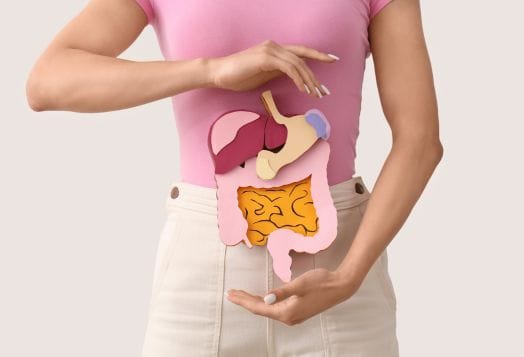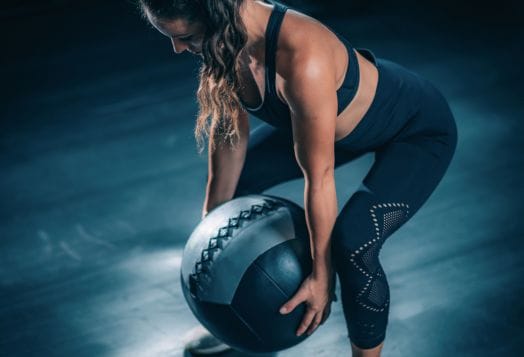If belly fat had a fan club, stress, carbs, and Netflix binges would be its founding members. And despite what that Instagram reel told you, no, you can’t lose belly fat fast by doing 100 crunches.
Want the real deal? These seven gym hacks are the fastest way to lose belly fat, backed by smart moves, not shortcuts. Let’s stop guessing and start sweating.
Why Belly Fat Is So Stubborn
Belly fat isn’t just about the jeans that suddenly stopped buttoning. The real villain is visceral fat. Unlike subcutaneous fat (the pinchable kind), visceral fat hugs your internal organs, disrupts your hormones, and increases your risk for heart disease, type 2 diabetes, and even certain cancers.

Why It’s So Hard to Lose Belly Fat Fast
If you’re wondering how to lose belly fat fast, know that it’s not about hitting the gym harder. You’ve got to work smarter by understanding what’s going on under the hood.
Stress: When you’re stressed (and no, your boss isn’t the only cause), your body releases cortisol. This survival hormone triggers fat storage around the abdomen. This is an ancient “fight or flight” mechanism.
Hunger Hormones: Leptin tells your brain you’re full. Ghrelin says you’re hungry. Belly fat disrupts this balance, keeping ghrelin high and leptin low, so you eat more, even when you don’t need to.
Lack of Sleep: Skimping on sleep? Your body compensates by boosting ghrelin and lowering leptin (see above), increasing sugar cravings and lowering energy expenditure.
Hormonal Imbalances: In women, falling estrogen levels during menopause shift fat storage from hips and thighs to the belly. In men, low testosterone (often worsened by obesity) can reduce muscle mass and promote fat gain.
Poor Diet Choices: High-carb diets (especially refined sugars) spike insulin. Over time, your body stops responding due to insulin resistance. This signals your body to store more fat.
7 Gym Hacks That Actually Work
There’s no magic machine at the gym that targets belly fat (though the ab cruncher might try to convince you otherwise). But there are smarter ways to train that help you burn more fat.
1. Strength Training: The Fat-Loss Powerhouse

What it is: Weight lifting, especially compound movements like squats, deadlifts, rows, and overhead presses.
Why it works: Strength training increases lean muscle mass. Muscle tissue is metabolically active, meaning it burns calories even when you’re doing nothing. More muscle = higher resting metabolic rate (RMR) = more fat burned 24/7.
How to do it:
Train at least 3x per week, focusing on full-body routines.
Aim for compound lifts that use multiple muscle groups. Think squats, bench press, deadlifts, and pull-ups.
Use progressive overload by gradually increasing weights or reps over time.
2. HIIT: High-Intensity Interval Training That Keeps On Giving
What it is: Short bursts of max effort exercise (like sprinting or cycling) followed by rest or low-intensity recovery.
Why it works: HIIT triggers EPOC (Excess Post-Exercise Oxygen Consumption), also called the afterburn effect, which increases calorie burn for up to 48 hours after your session. It also boosts mitochondrial efficiency and improves insulin sensitivity, key to reducing visceral belly fat.
How to do it:
Try protocols like:
30s sprint + 90s walk × 6 rounds
or
40s high-intensity bodyweight circuit + 20s rest × 20 minutes
3. Train the Core (But Rethink Crunches)
What it is: Core training goes beyond crunches. It includes all muscles that stabilise your spine and pelvis, including transverse abdominis, obliques, erector spinae, and glutes.
Why it works: A stronger core improves posture, balance, and the ability to generate force in other exercises. It also reduces the risk of back injuries and enhances gym performance.
While core exercises don’t directly “burn belly fat,” they make your abs more visible once the fat is gone and support stronger lifts that help you lose it faster.
How to do it:
Add planks, ab rollouts, hanging leg raises, and cable woodchoppers into your routine.
Train your core 2–3x per week, not daily.
Prioritise slow, controlled reps with proper breathing.
4. NEAT: The Underrated Calorie Killer
What it is: Non-Exercise Activity Thermogenesis, or NEAT, equals all the calories you burn outside of intentional workouts. Walking, fidgeting, doing household chores, and standing instead of sitting.
Why it works: NEAT can contribute up to 15–30% of total daily energy expenditure. Increasing daily movement burns more fat without stressing your body like high-intensity workouts. It’s particularly effective for visceral fat, which responds well to consistent, moderate activity.
How to do it:
Walk or cycle to work.
Take walking meetings.
Use a standing desk or do calf raises while brushing teeth.
Set a reminder to move every 45–60 minutes.
5. Periodise Your Training: Don’t Let Your Body Get Bored
What it is: Periodisation is structured variation in your training. This includes changing the type, intensity, and volume of workouts every few weeks to prevent adaptation and plateau.
Why it works: Your body adapts quickly. If you repeat the same workouts, progress may stall, and fat loss slows down. Periodisation stimulates new hormonal responses (like increased testosterone or GH), keeps things fresh, and reduces overtraining risk.
How to do it:
Example cycle:
Weeks 1–4: Heavy lifting (3–6 reps)
Weeks 5–7: Hypertrophy focus (8–12 reps)
Weeks 8–9: Metabolic/HIIT phase
Week 10: Deload (light activity + recovery)
6. Pre- & Post-Workout Nutrition
What it is: What you eat before and after your workouts directly impacts fat metabolism, recovery, and performance.
Why it works:
Pre-workout fuel gives you energy to train harder and burn more. Eating protein before training may increase fat oxidation, especially in the abdominal region.
Post-workout nutrition replenishes glycogen and supports muscle recovery, keeping your metabolism high.
How to do it:
Pre-workout (60–90 mins before): Oats + protein (e.g., egg whites, whey).
Post-workout (within 1 hour): Paneer/Tofu with quinoa or rice, or a protein smoothie with banana and peanut butter.
7. Track Progress Regularly
What it is: Regular tracking of body composition, waist measurement, and performance metrics.
Why it works: What gets measured, gets improved. Tracking helps you identify what’s working and what’s not, crucial for stubborn belly fat that doesn’t always reflect on the scale.
How to do it:
Measure your waist circumference (at navel) every 2 weeks.
Take photos monthly.
Use strength or cardio benchmarks to track performance.
Monitor how clothes fit; this is arguably the most honest feedback.
The Nutrition & Lifestyle Equation
Here’s the cold-pressed truth: you could be deadlifting your bodyweight and sprinting like Milkha Singh, but if your meals are a mix of fried snacks and sugary drinks, belly fat will stick around like a clingy ex.
1. Maintaining a Healthy Diet to Lose Belly Fat
A calorie deficit is still the gold standard for a healthy diet, but not all calories are created equal. Refined carbs and added sugars spike insulin and encourage fat storage. On the other hand, fibre-rich foods, lean protein, healthy fats, and complex carbs help manage appetite and keep blood sugar stable.
2. Lifestyle Changes for Belly Fat Reduction
It’s not just about what you eat, but how you live:
Sleep 7–8 hours/night: Poor sleep disrupts hunger hormones and raises cortisol, a known belly-fat promoter
Manage stress: Try yoga, meditation, or even a walk without your phone
Cut back on alcohol: Alcohol adds empty calories and slows fat metabolism
Work Smart, Not Just Hard
Losing belly fat fast isn’t about punishing your body with endless crunches or starving yourself on salad leaves. It’s about understanding how fat works, making science-backed gym choices, and pairing that with lifestyle shifts that actually stick.
The best way to lose belly fat? Combine strength training, cardio, smart nutrition, and consistency. The fastest way? Do it all with expert guidance, because guess what? You don’t have to do this solo.
And remember, abs aren’t made overnight, but with the right hacks, you can show belly fat the exit faster than your ex after a gym glow-up.




